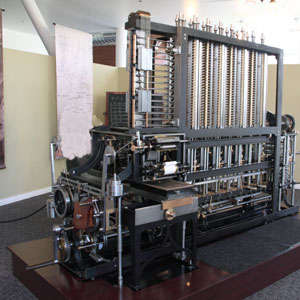The very name of Mountain View’s Computer History Museum may seem like an oxymoron. After all, computers are so much a part of the modern era that it is hard to imagine that they have a real “history,” dating back much earlier than World War II. An exhibit at the museum aims to set the record straight.
The precursor to the modern pocket calculator and, by extension the iPad, was not the abacus or the slide rule. It was a 15-ton mechanical contraption invented by English mathematician Charles Babbage, and on which he worked until his death in 1871.
It was a very complex idea at the time, using sequential control, branching, and looping—ideas that would take decades to be integrated into more modern machines. Very few people knew how to operate Babbage’s machine, but one of them, mathematician Ada Lovelace, was able to create an algorithm to calculate a sequence of Bernoulli numbers back in 1842. That gives her the distinction of being the first computer programmer, long before there were even outlets to plug a computer in.
This little bit of oft-forgotten history is being celebrated today at the Computer History Museum with a recreation of Babbage’s machine. Completed in 2008, the machine which consists of 25,000 parts, was only the second one of its kind to be assembled in the modern world—the first was completed in London in 2002.
Admittedly, it is much easier to do your math on a pocket calculator or laptop. Still, it cn be fascinating to see where it all began.
Read More at NBC Bay Area.

 Nomad Man
Nomad Man 


